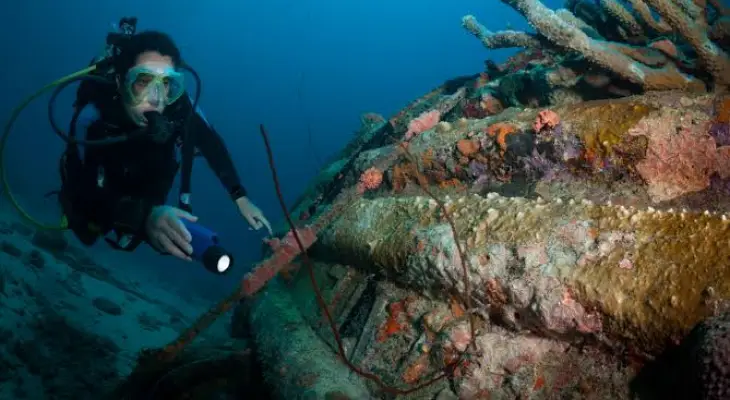Ming Dynasty Treasures Found in South China Sea Shipwreck

Holiday Ayo - China's National Cultural Heritage Administration (NCHA) said a team of archaeologists from China had discovered more than 900 artifacts from two ancient shipwrecks in the South China Sea.
Archaeologists used deep sea technology to investigate Ming Dynasty sites on the northwestern slope of the continent at a depth of 1.5 km in three phases over the past year.
They believe that the two shipwrecks are merchant ships from different periods of the Ming Dynasty, namely the period 1368-1644.
Both vessels were discovered in October 2022 by the crew of a manned submarine research vessel. According to reports in October 2023, the ship headed back to China, then sank.
The location of the two ships is 22 km from each other and is located 150 km southeast of Sanya, in Hainan Island Province.
What were found from the hundreds of artifacts? The two discovery sites were investigated jointly by the National Center for Archaeology, the Chinese Academy of Science, and the local museum in Hainan using manned and unmanned submarines.
To retrieve the artifact, archaeologists used a flexible manipulator arm attached to the submarine. Then they collected seabed sediment.
A 3D laser scanner and high definition camera were also used to record the distribution of the wreck area. Reporting from the South China Morning Post, more than 10,000 objects were identified by NCHA at the discovery location.
From these findings, many artifacts come from the Zhengde period in the Ming Dynasty (1505-1521). Nearly 1,000 pieces of treasure from the Ming Dynasty period, including copper coins and ornate pottery.
It is possible that there are other artifacts older than the period of the Hongzhi Emperor (1487-1505). Researchers also said the ship's cargo came from Jingdezhen porcelain and was intended for export.
On ship number 1, 890 artifacts were found, such as porcelain, copper coins and pottery. Meanwhile, on ship number 2, 38 artifacts were found, including ebony wood from Indian Ocean friends, relics, pottery, turban shells, deer antlers and porcelain.
The shipwreck and hundreds of discovered artifacts that clearly have cultural value could also strengthen China's political goal of asserting territorial claims over the region.
Quoted from CBS News, Beijing claims sovereignty over most of the South China Sea based on its "nine-dash line" policy and has tried to leverage that claim with China's historical presence in the region.








Leave a comment